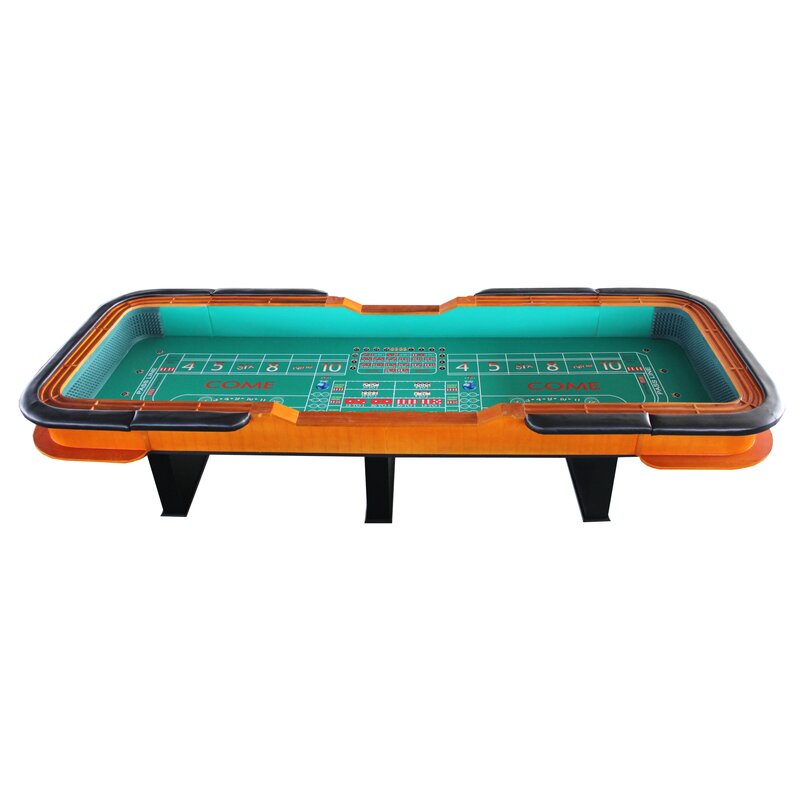You don’t have to know how the top six bets work to make them. But you’ll certainly want to know how they win and lose just for the sake of understanding craps.
When you’re making a 2, 3, 11, and 12 bets, it is important to know the slang terminology of each the numbers. In craps games, when someone says “Boxcars” it means 12. This outcome was named as such since two dice showing six resembles a boxcar on a freight train. The probability of rolling a “boxcar” is 1 in 36 or just under 3%. Once a point is made on the first roll or a come point on a succeeding roll, you may. A Come Out roll of 2, 3 or 12 (called Craps, the shooter is said to 'crap out') ends the round with players losing their Pass Line bets. A Come Out roll of 7 or 11 (a Natural) results in a win for Pass Line bets. The shooter continues to make Come Out rolls until he rolls 4, 5, 6, 8, 9, or 10, which number becomes the Point.
Craps 12bet
Here’s a closer look at what you must know about pass line, don’t pass line, come, don’t come, Place 6, and Place 8.

The pass line bet is made on the “come out” roll, or the first roll by a new shooter. This wager wins if a 7 or 11 is tossed on the come out, and it loses when a 2, 3, or 12 is rolled.
Any other number (4, 5, 6, 8, 9, 10) establishes a point. Pass line bettors want the point number to be rolled before a 7 in order to win.
Pass line pays 1:1, and it has 251:244 odds of winning.
The don’t pass line bet is made on the come out roll. It wins when a 2 or 3 is tossed on the come out, loses when a 7 or 11 is rolled, and pushes when a 12 is rolled.
Any other number becomes the point. Don’t pass line bettors need a 7 to be rolled before the point to win.
Don’t pass line pays 1:1 for a win and features 976:949 true odds.
The come bet has the same rules as pass line with regard to how it wins and loses. The only difference is that you can’t make a come wager until a point has been established.
Your come out roll becomes the shooter’s first roll after the point has been determined.
You win with a 2 or 3 on the come out, and lose with a 2, 3, or 12. When a point is established, you need the point number to be rolled before a 7.
A don’t come bet has the same rules as don’t pass line. But like the come bet, you can only place this wager after a point is established.
You win with a 2 or 3 on the come out, lose with a 7 or 11, and push with a 12. During the point rolls, you need a 7 to come up before the point number.
Place 6 and Place 8 are the two best prop bets in craps.

With Place 6, you need a 6 to be rolled before a 7 to win this bet. Place 6 pays 7:6 and has 6:5 true odds.
12 In Craps
With Place 8, you need an 8 to be rolled before a 7. Place 8 is just like Place 6 in that it pays 7:6 for a win and has 6:5 true odds.
Odds Of Rolling 12 In Craps
Don’t pass line and don’t come bets have the lowest house edges at 1.36%. This means that you should theoretically make these wagers every time because they give you the best chance to win.
Interestingly enough, though, many players instead make pass line and come bets in land-based casinos. But why?
Players traditionally like pass line and come wagers because they’re betting with the shooter. In contrast, don’t pass line and don’t come bets see you rooting for the shooter to lose.
Many craps players like following tradition because it creates a team-like atmosphere. And this camaraderie adds something to the game because players cheer together when their pass line betswin.
Of course, nothing is stopping you from making don’t bets. And other players won’t be waiting in the parking lot for you afterward if you do.
But I personally think that it’s worth sacrificing the extra 0.05% on the house edge in order to experience the camaraderie.

The one time that you do want to make don’t pass line and don’t come wagers, though, is when you’re playing online. You’re not at the table with anybody else in an online game, and it does nogood to make pass line and come bets, since they have a slightly higher house edge.



